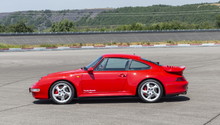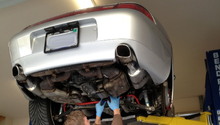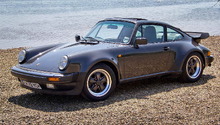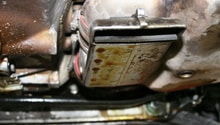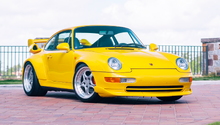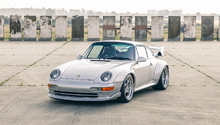Porsche 993: General Specifications
There are several variants of Porsche's 911 model car, but none are more highly regarded than the 993 series. The last to be powered by the company's air-cooled flat-six M64 engine, this car came outfitted some amazing components.
This article applies to the Porsche 993 (1993-1998).
Porsche’s 993 marked the last time a model 911 version was powered by its popular air-cooled Porsche flat-six M64 engine. Everything produced under this line, which was manufactured from 1993-1998, came with a derivative of the M64 engine, starting with the standard 3.6L / 272 HP up to the 1996 model when the 285 HP VarioRam was introduced. The 993 included suspension upgrades that came from a four-door sedan project that the company ended up never seeing through. The car’s new all-alloy, multi-arm rear suspension cornering reduced the threat of “oversteering,” which was a headache associated with previous 911 models. A six-speed manual transmission was also introduced with the 993, along with larger brakes and drilled discs, dual-flow exhaust, and improved power steering.
There are several types of 993 available. Following 911 tradition, the company offered this line in coupe, convertible, and Targa versions; owners had the additional option of 2 or 4-wheel-drive. In 1995, the 993 Turbo coupe was introduced; with its wider rear wheel arches, a fixed wing in the rear, and revised front and rear bumper moldings, it not only looked better, but also made it more aerodynamic. Come 1997, the 993 Turbo S was offered as a high-spec model, upgradeable to 424HP for the American market and 450HP for the Europeans. Just 183 vehicles were built, and they all featured larger rear wings, air scoops behind the doors, 4-pipe exhausts, yellow calipers, and carbon fiber interior accents.

Figure 1. 1995 993 Porsche convertible. 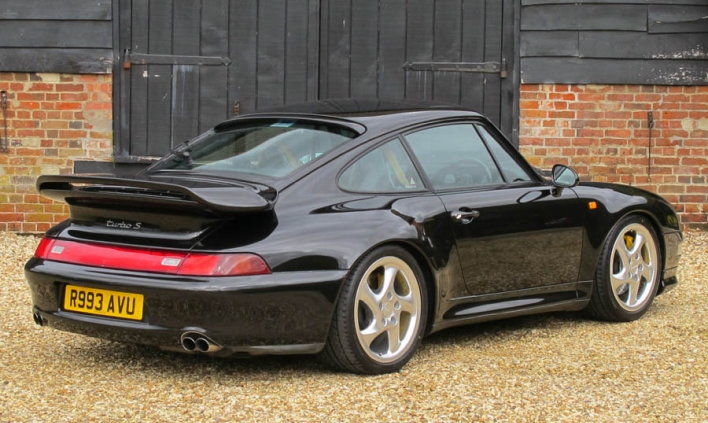
Figure 2. 993 Porsche Turbo S.
Altogether, the combined total sales of the 4 model 993 sub-series that is the Carrera C2 and C4, Turbo 3.6, and Carrera RS came to 68,029 cars.
Porsche 993: Fast Facts
- For the purpose of performance and manufacturing efficiency, Porsche 993s use the same style of door and engine from the previous 911 generation, the 964.
- While a Porsche 993 Speedster was never actually manufactured, two are believed to exist. Comedian Jerry Seinfeld purchased a Cabriolet model that was modified in the factory to create a 993 Speedster. The other one was offered to Ferdinand A. Porsche himself on his 60th birthday.
- Porsche 993s have two oil filters.
- Porsche 993 have no traction control variant. That’s because the company was historically opposed to any sort of electronic driver aids, believing that either the drivers knew what they were doing behind the wheel, or they shouldn’t be driving the car at all. Those unfamiliar with this sort of driving experience will often find themselves spinning out if their steering and throttle inputs aren’t exact.
- Porsche produced a stripped-down version of the 993 Carrera RS as a racing offshoot of this particular model. It came with the naturally-aspirated 3.8-liter engine and a bunch of weight-saving measures, like a fixed rear wing and lightweight wheels. Other parts were left off to save weight, like the sound-deadening material, headlight washers, and rear seats. Sportier versions, referred to as the RSR or RS Clubsport, were brought to the public with air conditioning and power windows. Unfortunately, these cars were never offered for sale in the United States.
- Porsche 993s have a 19-gallon fuel tank, and the 993 turbo models have a massive 24-gallon tank. Left-hand driven Porsche 993 variants could even be fitted with the larger tank as an option. However, without the larger tank, the efficient driver could see their Porsche 993 take them some 500 miles before needing a refill, as the car sports a 16/25 MPG fuel economy.
- Porsche 993s were the first production 911s to feature a six-speed manual transmission. 993s that come with automatic transmissions could have the option of a 4-speed tiptronic transmission, which come with shift buttons outfitted on the steering wheel.

Maintenance
Maintaining a Porsche 993 is not cheap. Here's a quick breakdown of parts and labor:
Maintenance Item |
Part Cost |
Labor |
|---|---|---|
| Oil change | $112 | $188 |
| Clutch replacement | $850 | $1,700 |
| Steering-gear replacement | $1,700 | $400 |
| Top-end rebuild | N/A | $7,000-8,000 |
| Dual-distributor belt change | $15 | $430 |
| Lower valve cover gasket replacement | $50 | $350 |
| Upper and lower valve cover gasket replacement | $90 | $780 |
| Chain box cover gasket replacement | $160 | $900 |
| Replacement of blower motor resistors | $120 | $430 |
| Four-wheel alignment | N/A | $300 |
Related Discussions
- Porsche 993 Turbo’s Full Detailed Factory Specs and Difference with Turbo - Rennlist.com
- Factory 3.8 Liter 993 Engine Option x51 Detailed Spec - Rennlist.com
- Differences Between 993 and 993rs - Rennlist.com

